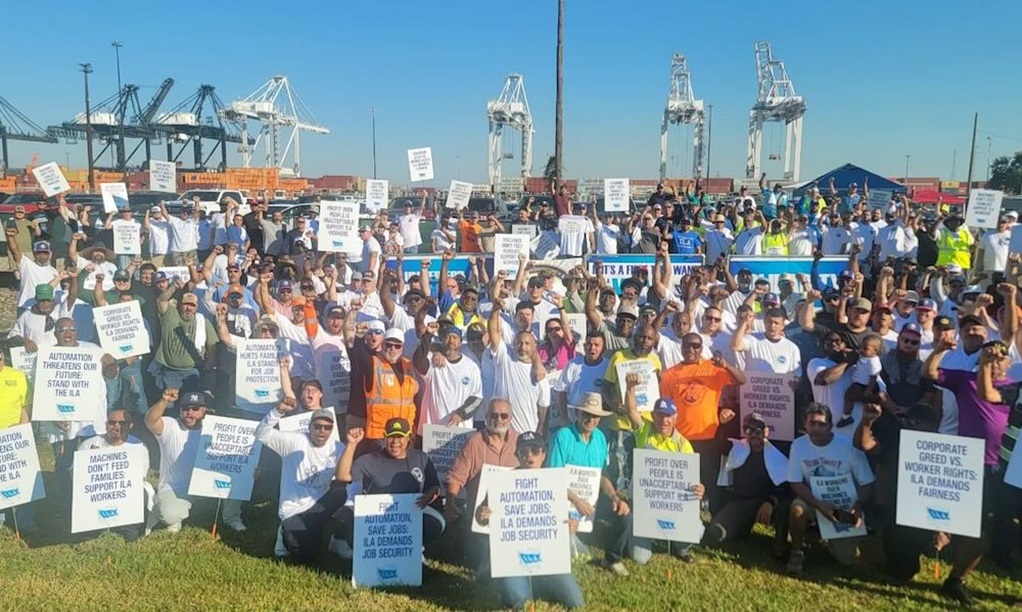
Strike Paralyzes America’s Eastern Seaboard, with No End in Sight
The strike across the eastern seaboard of the United States has entered its third day, with analysts predicting it could stretch into weeks rather than days.
Approximately 45,000 dockworkers spanning ports from Maine to Texas initiated the strike on Monday night, marking the largest industrial action at ports globally this century. In response, several shipping companies have declared force majeure.
The International Longshoremen’s Association (ILA) and the United States Maritime Alliance (USMX), representing port employers, remain at an impasse. The union is demanding wage increases exceeding 70% and guarantees against automation of port facilities, while USMX has expressed readiness to return to negotiations but rejected the union’s preconditions.
The strike has hit container and roll-on/roll-off (roro) terminals on the East and Gulf coasts hardest, according to port agent Inchcape. However, private terminals handling bulk and liquid cargo have been less affected.
Support for the ILA’s position has come from both President Joe Biden and Republican presidential hopeful Donald Trump, suggesting the labor action could persist for some time. This is the first strike of its kind on the US East Coast since 1977.
The disruption is mounting. By Wednesday, at least 45 container vessels were anchored outside affected ports, unable to unload – up from just three before the strike began, according to Everstream Analytics. The backlog is expected to double by the end of the week.
Despite the growing crisis, global freight rates have continued to decline. Drewry’s World Composite Index dropped by $100 per FEU to $3,489.33, with rates from Asia to the US East Coast falling $106 to $5,922 per FEU. However, trade routes from New York to Rotterdam saw a slight increase of $2 to $724 per FEU.
Sea-Intelligence warns that every week of the strike will leave over 60 container ships stranded, with a third of these queuing outside New York. The strike is expected to result in a weekly capacity loss of over 400,000 TEU, equating to 1.4% of the global fleet. This could drive up freight rates not only for US-bound shipments but across major global shipping routes.
If the strike continues for a week, perishable goods are likely to spoil. A strike lasting more than a month, according to Sea-Intelligence, could potentially tip the US economy into recession.
